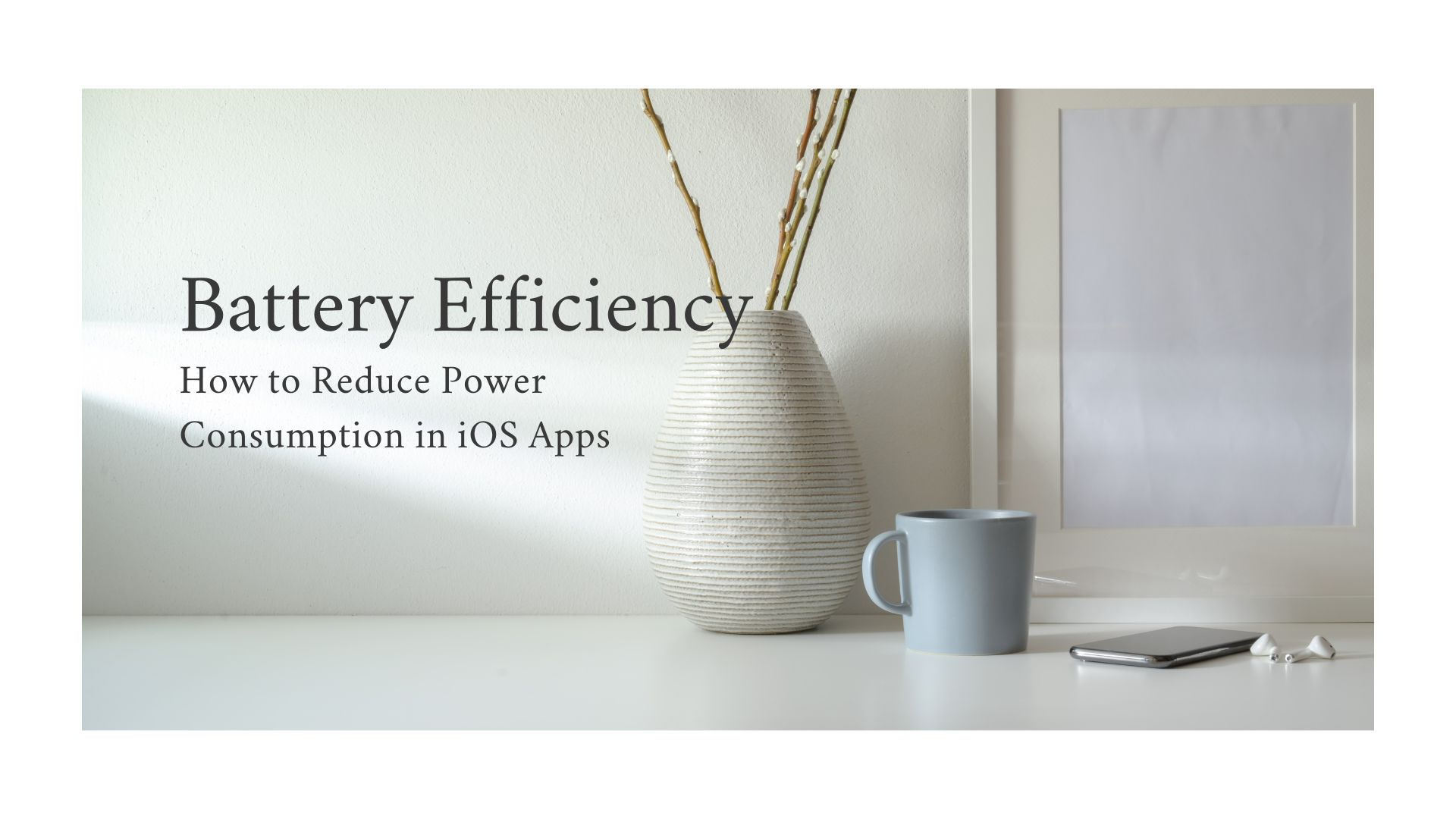Battery Efficiency: How to Reduce Power Consumption in iOS Apps
Battery life is one of the primary concerns for iOS users, and the efficiency of an app’s power usage can make or break its success. For developers, optimizing battery consumption in iOS apps is essential for delivering a seamless, user-friendly experience that doesn’t drain a device’s battery. In this blog post, we’ll explore effective strategies and best practices to reduce power consumption in iOS apps, helping you build efficient apps that keep users happy and engaged.

1. Optimize Network Calls and Data Handling
Networking is one of the primary battery-consuming activities in mobile apps. Making frequent or unnecessary network requests can lead to increased battery usage, especially over cellular networks.
Best Practices for Networking Efficiency:
- Batch Requests: Group requests to avoid waking the radio (Wi-Fi or cellular) frequently. Instead of making separate requests for each action, batch them to reduce radio usage.
- Use Background Fetch Wisely: When using background fetch to update data, make sure it’s truly necessary. Limit fetches to essential data only.
- Implement Caching: Caching allows your app to reuse previously fetched data, reducing the number of requests. Use the NSURLCache class to cache data locally and avoid redundant network requests.
- Use “Low Data Mode” Signals: iOS 13 introduced Low Data Mode, which users can enable to reduce network usage. Respect this setting by limiting nonessential network requests when Low Data Mode is on.
- Optimize Payload Size: Reduce data payload sizes by only sending essential data. Avoid verbose data structures and compress data wherever possible.
2. Minimize Location Service Usage
Location tracking is a common culprit for battery drain, especially if your app uses GPS continuously. Striking a balance between accuracy and efficiency is essential.
Best Practices for Location Efficiency:
- Use Location Services Only When Necessary: Set up location services to activate only when required, rather than continuously.
- Optimize Accuracy Settings: Use the appropriate location accuracy for the task. For example, use kCLLocationAccuracyHundredMeters instead of kCLLocationAccuracyBest when high precision isn’t needed.
- Implement Significant-Change Location Service: Instead of constantly tracking a user’s location, consider using the significant-change location service, which provides updates only when there’s a significant movement (around 500 meters).
- Respect “Location Services” Settings: Monitor the “When In Use” and “Always” permissions carefully and only request location updates when necessary.
3. Improve Background Task Management
Improper background task management can lead to excessive battery drain, especially if tasks are allowed to run indefinitely or too frequently.
Best Practices for Background Tasks:
- Use Background Modes Appropriately: Only use background modes for tasks that genuinely require it, like audio playback or VoIP. Avoid using background modes for tasks that can be handled during active app use.
- Optimize Task Completion Handling: Use the beginBackgroundTask method with a specific end time. Ensure tasks terminate on time, rather than running longer than necessary.
- Background Refresh Control: Allow users to control background refresh settings. Honor system preferences, and consider reducing background tasks if the user disables background app refresh.
4. Leverage Low Power Mode Awareness
Starting with iOS 9, iOS has supported Low Power Mode, which users can enable to extend battery life by reducing background activity and visual effects.
Best Practices for Low Power Mode:
- Detect Low Power Mode Status: Use the NSProcessInfo class to check if Low Power Mode is active. This lets you adjust the app’s behavior accordingly.
- Reduce Nonessential Animations and Updates: When Low Power Mode is on, consider disabling nonessential animations, visual effects, and background tasks that aren’t critical.
- Avoid High-Resolution Images or Intensive Processing: If your app uses high-resolution images or heavy computational tasks, reduce these when Low Power Mode is enabled to conserve power.
5. Efficiently Handle Push Notifications
Push notifications can be a powerful tool but can also be a source of battery drain if not managed correctly.
Best Practices for Notifications:
- Limit the Frequency and Priority of Notifications: Avoid sending frequent or unnecessary notifications, as this causes the device to wake up and use additional power.
- Use Silent Push Notifications Wisely: If you need to update content in the background, use silent pushes carefully and ensure they only trigger essential updates. Excessive silent pushes can deplete the battery.
- Respect User Settings and System Preferences: Only send notifications that are relevant and honor user preferences. By reducing unnecessary notifications, you help save power and improve the user experience.
6. Minimize Data Processing
Intensive data processing can strain both the CPU and battery. By reducing the amount and frequency of data processing tasks, you can improve overall battery efficiency.
Best Practices for Data Processing:
- Move Processing to the Server: Offload complex computations to the server where possible, particularly for data-heavy operations. This allows you to send the processed data back to the device rather than draining the device’s resources.
- Use Background Processing for Non-Urgent Tasks: iOS’s background processing capabilities allow non-urgent tasks to run at optimal times. Use the background processing framework for data processing that doesn’t need immediate completion.
- Limit Database Operations: Database operations can be costly, so batch reads and writes where possible. Use Core Data or Realm’s capabilities for efficient data handling.
Conclusion: Build Efficient Apps with Users in Mind
Battery efficiency is a crucial part of creating high-quality iOS apps, especially as users increasingly look for apps that won’t drain their device’s battery. By implementing efficient network handling, reducing location services, managing background tasks, respecting Low Power Mode, and optimizing graphics, you can significantly reduce power consumption in your app.
Ultimately, an efficient app is not only good for battery life but also contributes to a positive user experience. By optimizing battery usage, you create an app that users will enjoy using—one that respects their time, their device, and, importantly, their power.


